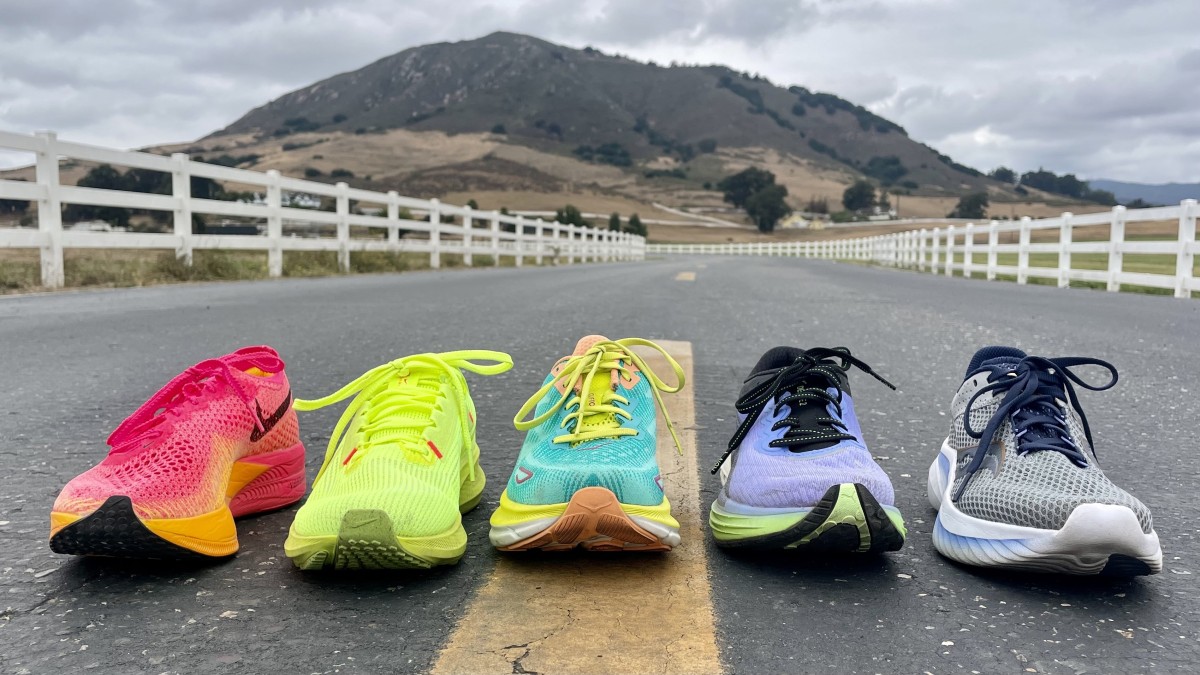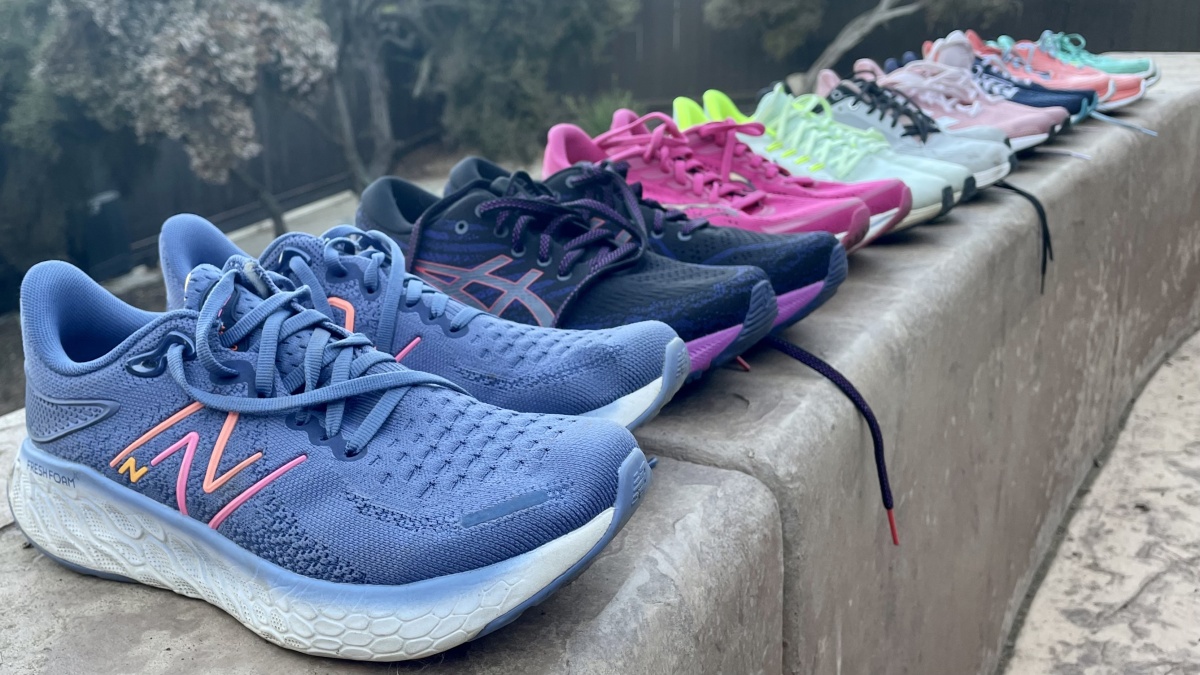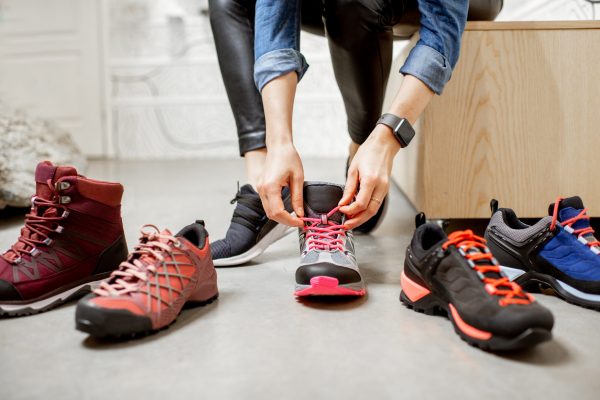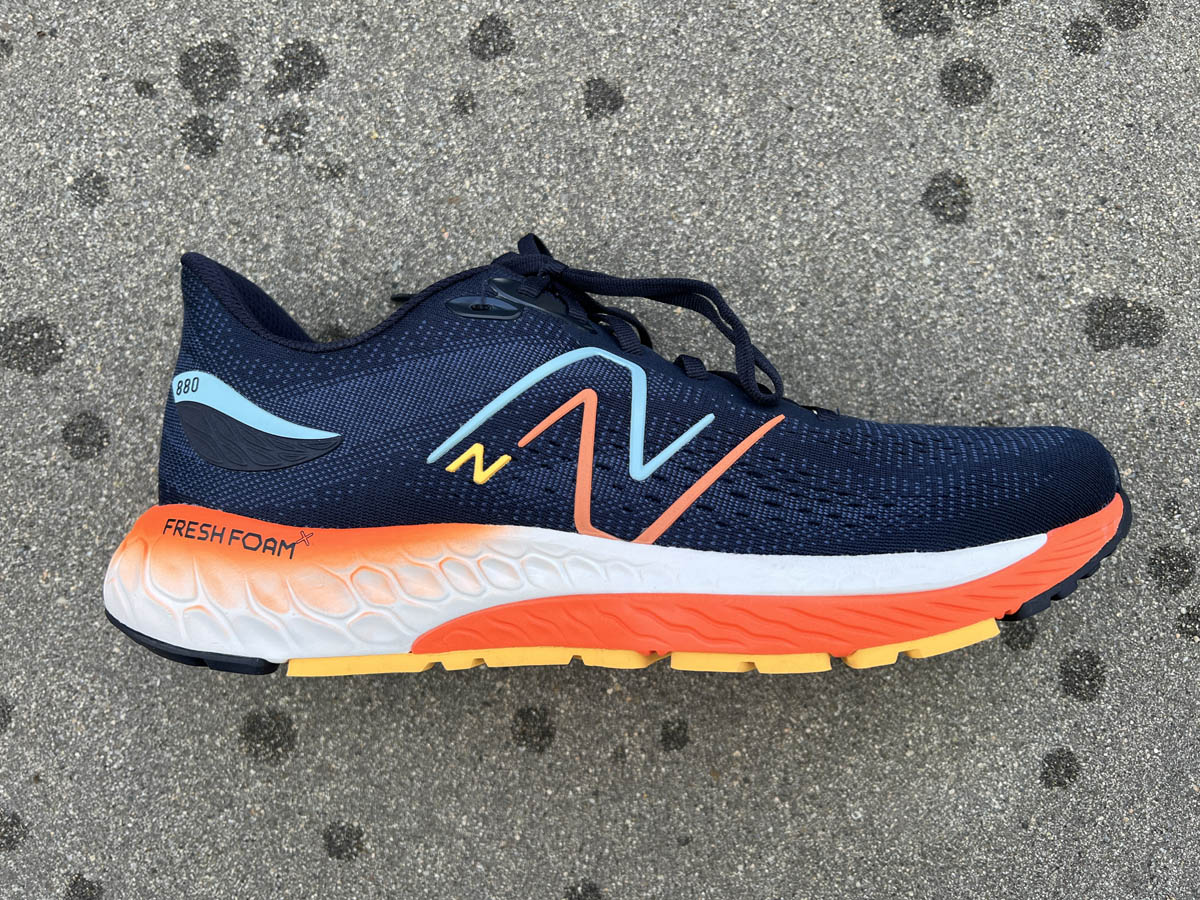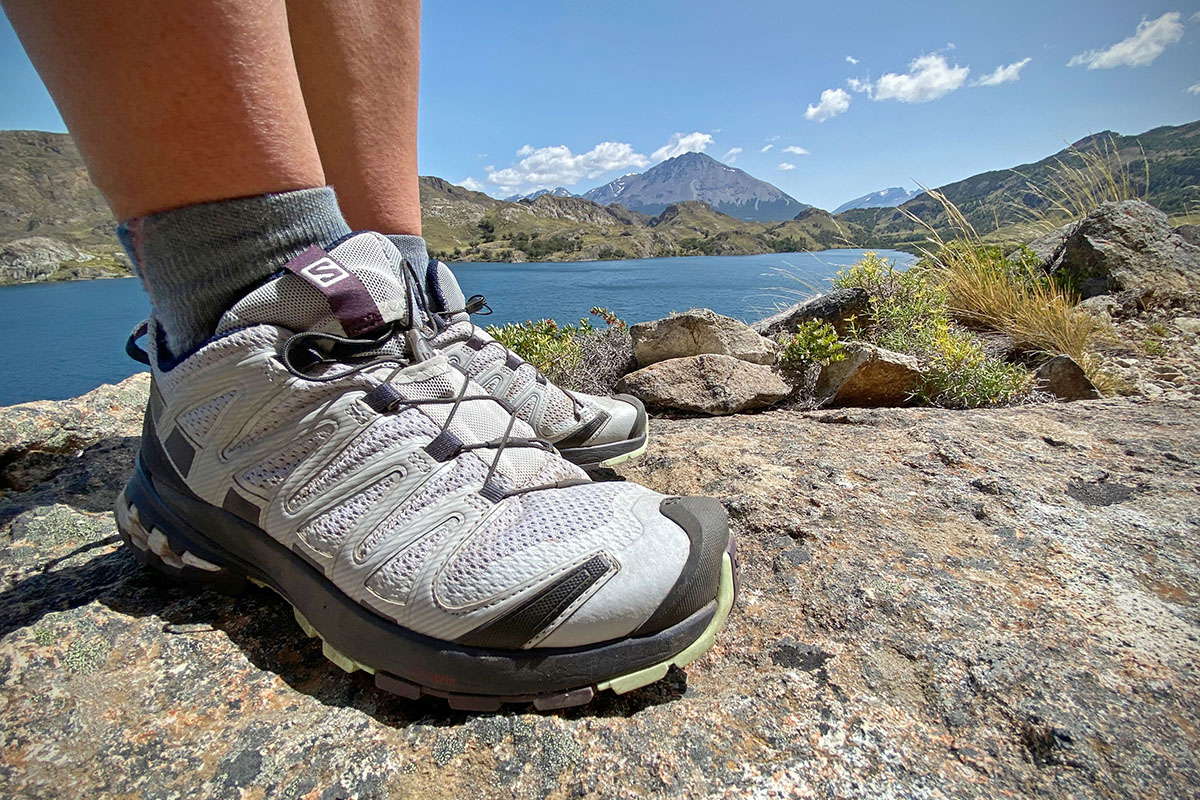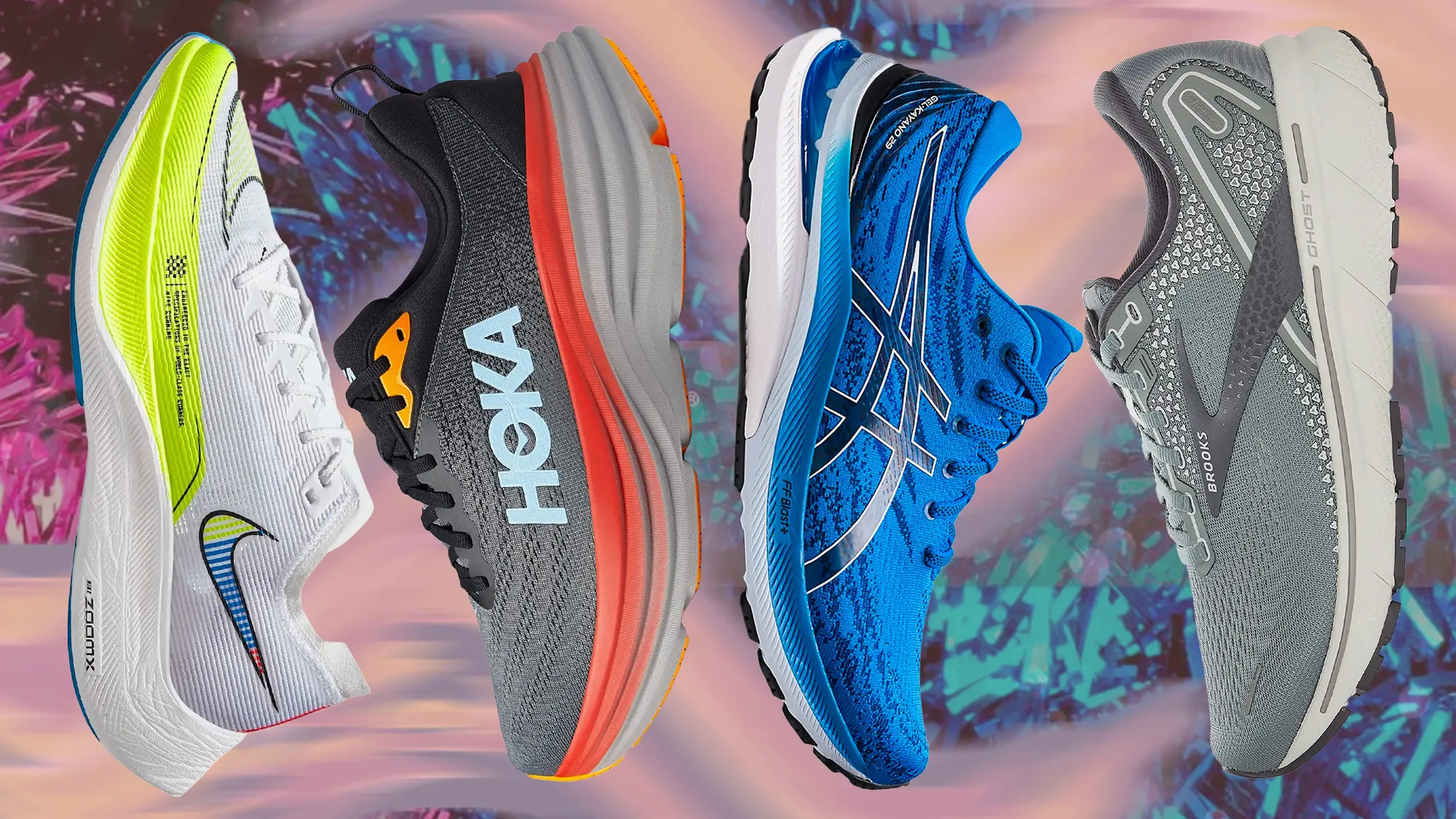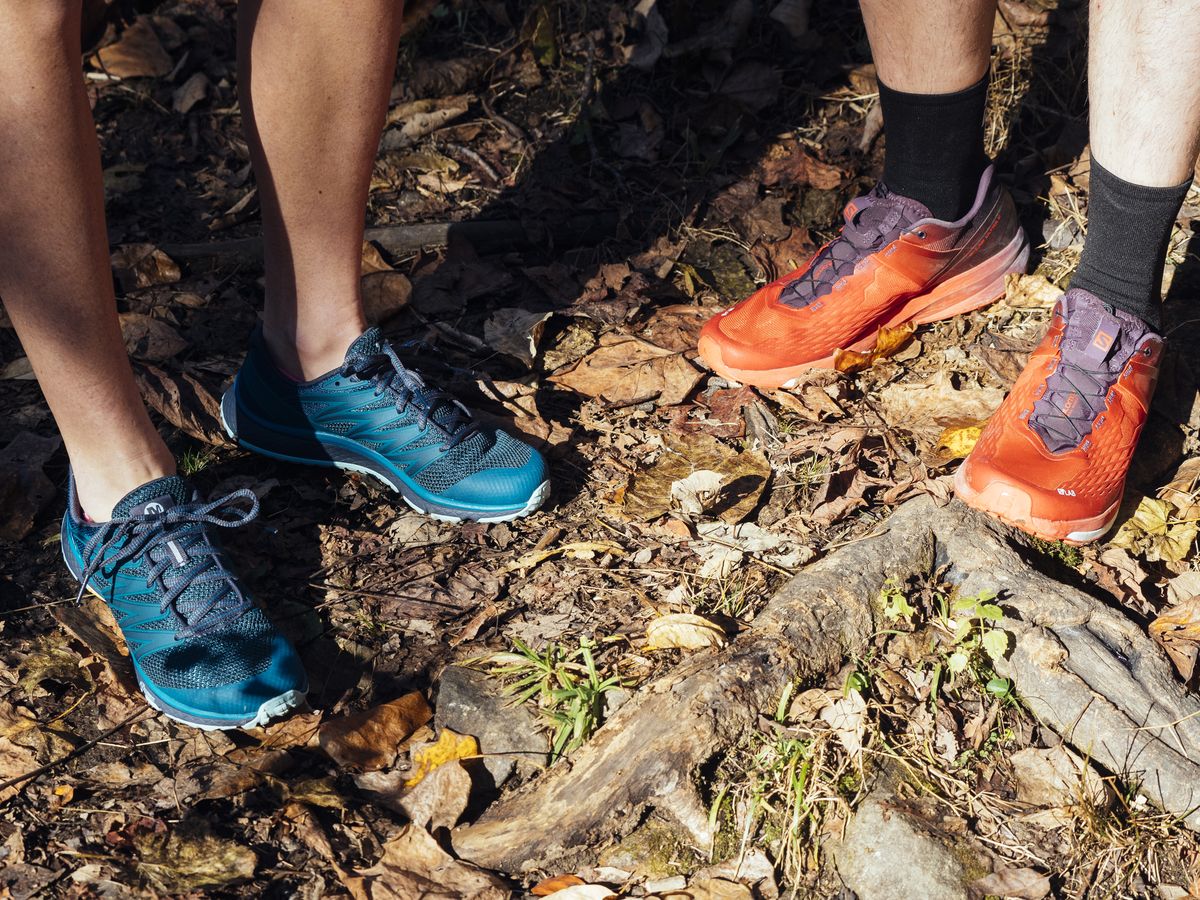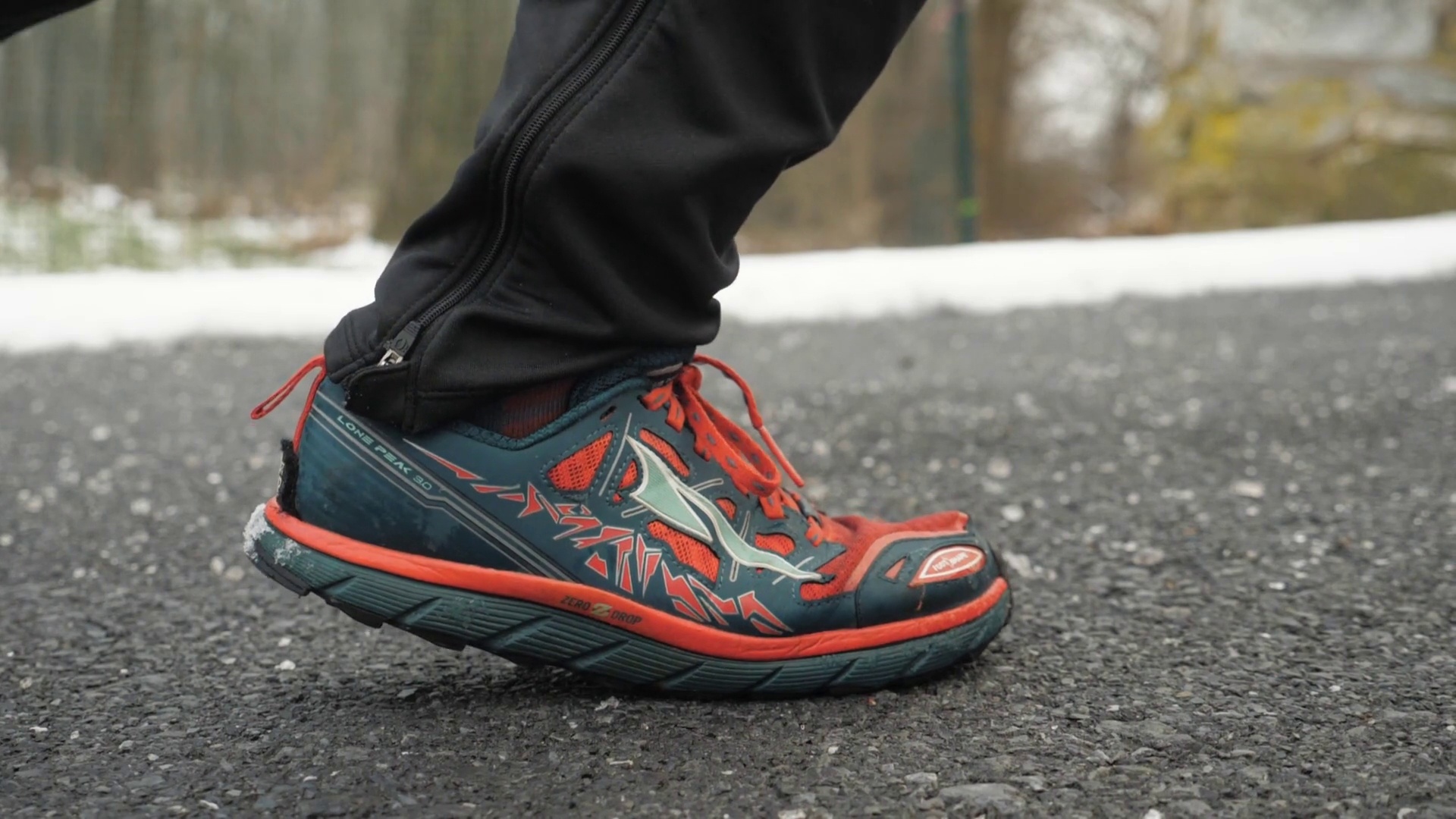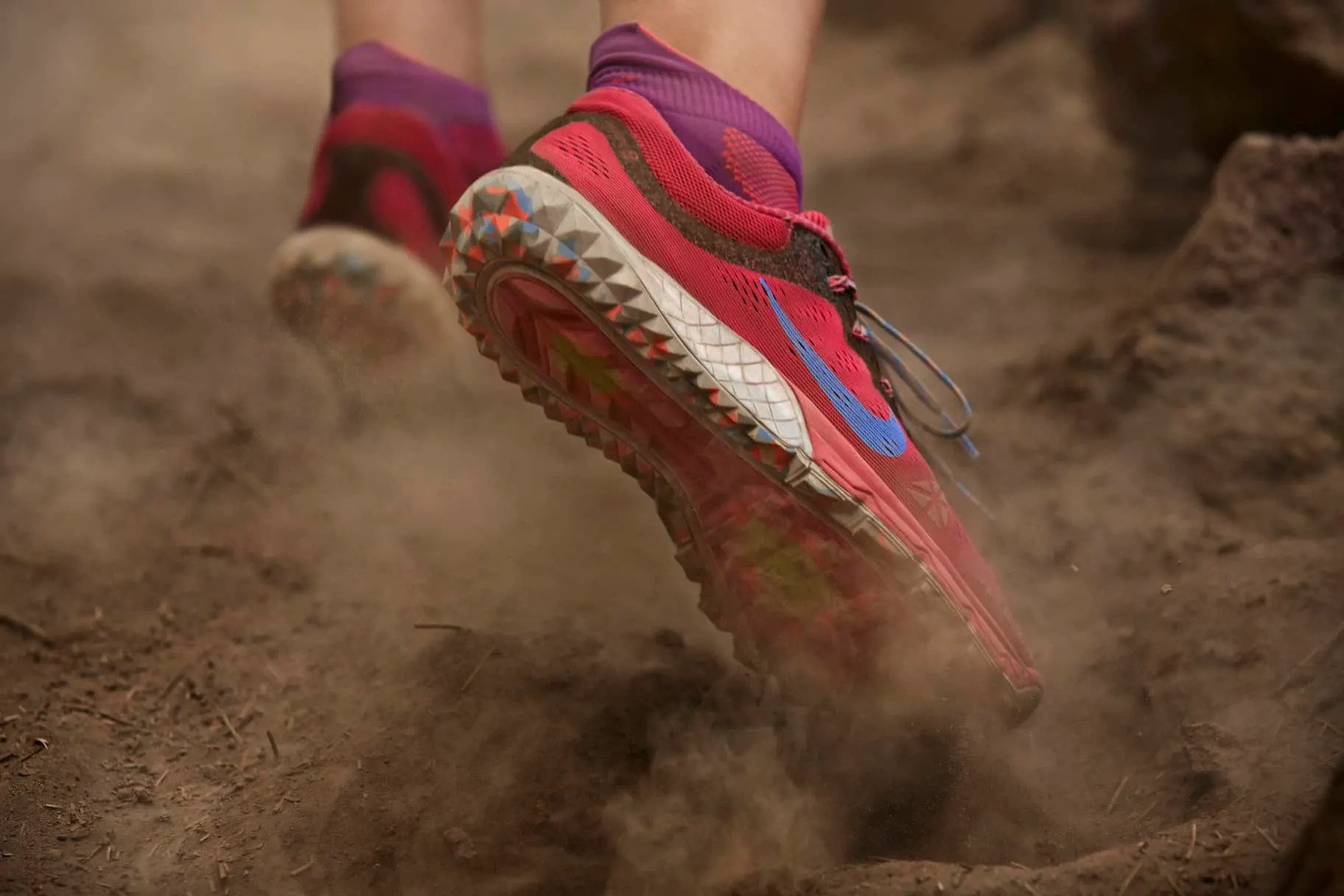

Featured
What Are Trail Running Shoes
Modified: August 19, 2023
Discover the top featured trail running shoes designed for off-road adventures. Enhance your running experience with durable and supportive footwear.
Introduction
Trail running is a thrilling and invigorating outdoor activity that combines the joy of running with the excitement of exploring natural landscapes. Whether you’re navigating through rugged mountain terrains or winding forest trails, having the right gear is essential to enhance your performance and protect your feet from the unpredictable elements of the trail. One crucial element of a trail runner’s gear is a pair of reliable trail running shoes.
Trail running shoes are specially designed to provide maximum support, traction, and durability in off-road conditions. Unlike traditional road running shoes that are optimized for smooth pavements and sidewalks, trail running shoes are built to withstand the challenges of uneven, slippery, and rocky terrains. They offer enhanced stability, protection, and grip, allowing you to navigate through various terrains with confidence and agility.
Whether you’re a seasoned trail runner or just beginning to explore this exhilarating sport, having the right pair of trail running shoes can make a significant difference in your performance and overall running experience. In this article, we will delve into the key features of trail running shoes, explore the differences between trail running shoes and road running shoes, discuss the various types of trail running shoes available, and provide tips on how to choose the right pair for your needs.
So, if you’re ready to take your running adventures off the beaten path, lace up your trail running shoes and let’s dive into the world of trail running footwear.
Key Features of Trail Running Shoes
Trail running shoes are specifically designed to provide the necessary support and protection for off-road running. They incorporate a range of features that enable runners to tackle the challenges of uneven trails, slippery surfaces, and unpredictable terrains. Here are some key features to look out for when choosing trail running shoes:
- Aggressive Outsole: A durable and aggressive outsole is one of the most important features of trail running shoes. It should have deep lugs and multidirectional patterns to offer optimal grip and traction on various surfaces such as dirt, mud, rocks, and roots.
- Cushioning and Stability: Trail running shoes provide cushioning to absorb the impact of uneven terrain. They often feature additional cushioning in the midsole, which provides comfort and reduces the risk of foot fatigue on longer runs. Meanwhile, a stable and supportive design helps prevent ankle rolls and provides a secure fit.
- Protective Toe Cap: To shield your toes from rocks, roots, and other obstacles, trail running shoes often have a protective toe cap made of durable materials such as rubber or TPU. This feature helps prevent painful injuries and adds durability to the shoe.
- Waterproof or Water-Resistant: Depending on the type of trails you’ll be running on, you may want to consider shoes with waterproof or water-resistant properties. These features help keep your feet dry and comfortable when encountering wet conditions or crossing streams.
- Lightweight and Breathable: Trail running shoes are designed with lightweight materials to minimize fatigue and increase agility on the trail. Additionally, they often have breathable uppers that allow air circulation and help keep your feet cool and sweat-free.
- Ankle Support: Some trail running shoes offer additional ankle support through features like a higher collar or a firm heel counter. This can be beneficial for runners who require extra stability and protection on challenging terrain.
Remember, the right combination of these key features will depend on the specific type of trail running you’ll be doing and the conditions you’ll encounter. It’s important to assess your individual needs and choose the shoes that best align with your preferences and priorities when it comes to trail running.
Differences Between Trail Running Shoes and Road Running Shoes
While trail running shoes and road running shoes may appear similar at first glance, there are several key differences that set them apart. These differences cater to the unique demands and challenges faced by runners on different terrains. Here are some of the main distinctions between trail running shoes and road running shoes:
- Outsole Design: The outsole of trail running shoes is more rugged and aggressive compared to road running shoes. Trail shoes feature deeper lugs, multidirectional patterns, and sticky rubber compounds that provide excellent traction and grip on uneven and slippery surfaces, such as dirt, rocks, and mud. In contrast, road running shoes have a smoother outsole designed for maximum contact and grip on paved surfaces.
- Cushioning: Trail running shoes typically have more cushioning in the midsole to absorb the impact of rough and uneven trails. This extra cushioning helps protect the feet and reduces fatigue during longer runs. On the other hand, road running shoes focus on providing cushioning that’s optimized for smoother surfaces, offering a balance between shock absorption and responsiveness.
- Support and Stability: Trail running shoes offer enhanced support and stability to navigate through challenging terrain. They often have features like a stiff and durable upper, a reinforced toe cap, and a more secure lacing system to provide stability and protect against rocks and debris. Road running shoes, while still providing support, prioritize flexibility and lightweight construction for a smoother and more efficient stride on even surfaces.
- Waterproofing: Due to the unpredictable elements encountered on trails, some trail running shoes come with waterproof or water-resistant properties. This feature helps keep your feet dry and comfortable when running through wet conditions, such as rain or slippery trails. Road running shoes generally do not have waterproofing features since they are mainly intended for running on dry pavement.
- Weight: Trail running shoes are typically heavier than road running shoes due to additional features like protective toe caps, rugged outsoles, and extra cushioning. This weight is necessary to provide the required stability and durability on rough terrain. In contrast, road running shoes prioritize lightweight construction for a more efficient and faster running experience on smoother surfaces.
Understanding these differences is essential when choosing the right pair of running shoes for your specific needs and preferences. By selecting the appropriate shoes for the type of terrain you plan to run on, you can optimize your performance, ensure your comfort, and reduce the risk of injuries.
Types of Trail Running Shoes
Trail running shoes come in a variety of types, each designed to meet the specific needs of different trail runners. The type of trail running shoe you choose will depend on factors such as the type of terrain you’ll be running on, your running style, and personal preferences. Here are some common types of trail running shoes:
- Lightweight and Minimalist Trail Running Shoes: These shoes are designed for experienced trail runners who prefer a minimal and natural feel while running. They have a low-profile design, minimal cushioning, and a flexible sole for an enhanced ground feel and agility on less technical trails.
- Stability and Cushioned Trail Running Shoes: These shoes are ideal for runners seeking more support and cushioning on the trails. They offer additional stability features such as wider platforms, medial posts, or supportive overlays, which help prevent overpronation and offer a smooth, comfortable ride.
- Waterproof Trail Running Shoes: These shoes are equipped with waterproof membranes that prevent water from entering the shoe, keeping your feet dry in wet and muddy conditions. They are ideal for runners who frequently encounter wet or rainy conditions on the trails.
- Technical and Off-Trail Running Shoes: These shoes are designed for runners who frequently tackle highly technical and challenging terrain. They have aggressive outsoles with deep lugs, added protection features like rock plates, and a reinforced upper for durability and foot protection.
- Fast and Racing Trail Running Shoes: These shoes are designed for speed-oriented trail runners and those who participate in trail races. They typically have a lightweight and flexible design to promote a fast and responsive running experience.
- Barefoot Trail Running Shoes: For those who enjoy a truly minimalist experience, barefoot trail running shoes provide the least amount of cushioning and support. They promote a natural running style and strengthen the muscles in the feet and lower legs, but require a gradual transition period for adaptation.
Remember, the type of trail running shoe you choose should align with your running goals, the type of terrain you’ll be running on, and your personal preferences. It’s important to try on different types of shoes and consider factors such as fit, comfort, and the specific features that will best support your trail running adventures.
How to Choose the Right Trail Running Shoes
Choosing the right trail running shoes is essential to ensure your comfort, performance, and safety on the trails. With a wide variety of options available, it can be overwhelming to navigate through the choices. Here are some key factors to consider when selecting the perfect trail running shoes:
- Terrain: Consider the type of terrain you’ll be running on. If you’ll be on technical trails with rugged and rocky terrain, look for shoes with aggressive outsoles, added protection, and stability features. For smoother and less technical trails, you can opt for shoes with a lighter and more flexible design.
- Fit: Proper fit is crucial for trail running shoes. Make sure to try them on and ensure there is enough room in the toe box for your toes to splay comfortably. The shoes should provide a snug fit around the midfoot and heel to minimize slippage and provide stability.
- Support and Cushioning: Depending on your preference and running style, choose shoes with the right level of support and cushioning. Consider factors such as arch support, pronation control, and the amount of cushioning required to protect your feet on the terrain you’ll be running on.
- Protection: Look for shoes with features like toe caps and rock plates to protect your feet from rocks, roots, and other trail debris. These added elements will offer extra durability and shield your feet from potential injuries.
- Waterproofing: If you frequently encounter wet or muddy trails, consider shoes with waterproof or water-resistant properties. These features will keep your feet dry and comfortable, preventing discomfort and potential blisters.
- Traction: Opt for shoes with an outsole that provides good traction on the specific terrain you’ll be running on. Look for deep lugs and multi-directional patterns that offer grip on various surfaces, such as mud, dirt, and rocks.
- Weight: Consider the weight of the shoes, as it can impact your running performance and fatigue levels. Lightweight shoes offer increased agility and speed, while heavier shoes provide more stability and protection. Find the right balance that suits your needs.
Ultimately, the right trail running shoes are a personal choice that depends on your individual preferences, running style, and the type of trails you’ll be exploring. It’s always a good idea to try on multiple pairs, test them on different surfaces, and seek expert advice if needed. By considering these factors, you can find the perfect trail running shoes that will enhance your running experience and keep you comfortable and supported on your outdoor adventures.
Tips for Maintaining Trail Running Shoes
Maintaining your trail running shoes properly will not only prolong their lifespan but also ensure optimal performance and comfort on the trails. Here are some essential tips for maintaining your trail running shoes:
- Clean them regularly: After each run, remove any dirt, mud, or debris from your shoes. Use a brush or washcloth with mild soap and water to gently clean the upper, outsole, and insole. Avoid using harsh chemicals or excessive scrubbing, as this can damage the materials.
- Air dry them: After cleaning, allow your shoes to air dry naturally. Avoid direct heat sources like radiators or dryers, as excessive heat can cause the materials to warp or break down. Stuff them with crumpled newspaper or shoe trees to help retain their shape.
- Rotate your shoes: To extend the life of your trail running shoes, consider rotating between two or more pairs. This allows each pair to have ample time to dry out between runs, reducing the risk of bacterial growth and odors.
- Store them properly: When not in use, store your trail running shoes in a cool, dry place away from direct sunlight. Avoid leaving them in a hot car or damp environment, as this can lead to mold, mildew, and deterioration of the materials.
- Replace worn-out parts: Over time, certain parts of your shoes may wear out, such as the laces or insoles. Replace these parts as needed to maintain optimal performance and comfort. Additionally, if you notice significant wear on the outsole or midsole, it may be time to consider replacing your shoes.
- Reseal waterproofing: If your trail running shoes have waterproof or water-resistant properties, periodically reapply a waterproofing treatment to help maintain their effectiveness. Follow the manufacturer’s instructions for the specific product you’re using.
- Be mindful of how you store dirty shoes: If your shoes are extremely dirty or muddy after a run, avoid storing them with your clean gear. Carry a separate bag or use a plastic bag to keep the dirt and moisture contained until you can properly clean them.
- Inspect for damage: Regularly inspect your trail running shoes for any signs of damage, such as loose stitching, worn outsoles, or tears in the upper. Address any issues promptly to prevent further damage and potential discomfort during your runs.
By following these maintenance tips, you can ensure that your trail running shoes remain in optimal condition, providing the necessary support, protection, and performance you need on the trails. Taking care of your shoes will ultimately enhance your overall trail running experience and extend the lifespan of your favorite pair.
Conclusion
Trail running shoes are a vital part of any trail runner’s gear, offering the necessary support, protection, and traction to conquer the challenges of off-road running. Whether you’re venturing into rugged mountainous terrains or exploring winding forest trails, choosing the right pair of trail running shoes can significantly enhance your performance and overall running experience.
In this article, we explored the key features of trail running shoes, including the aggressive outsoles, cushioning and stability, protective toe caps, waterproofing, lightweight and breathable designs, and ankle support. We also examined the differences between trail running shoes and road running shoes, highlighting how they cater to distinct running environments and terrains.
We discussed various types of trail running shoes, such as lightweight and minimalist shoes for a natural feel, stability and cushioned shoes for added support, waterproof shoes for wet conditions, technical and off-trail shoes for challenging terrains, fast racing shoes for speed, and barefoot shoes for a minimalist experience.
Additionally, we provided valuable tips on how to choose the right trail running shoes, emphasizing factors like terrain, fit, support, cushioning, protection, waterproofing, traction, and weight. We also offered maintenance tips to help prolong the lifespan of your trail running shoes, including cleaning, proper storage, regular inspections, and timely replacement of worn-out parts.
By considering these factors and implementing proper maintenance, you can find the perfect pair and ensure their longevity, allowing you to conquer the trails with confidence and comfort.
So, lace up your trail running shoes, embrace the thrill of the trails, and embark on your next adventure.
